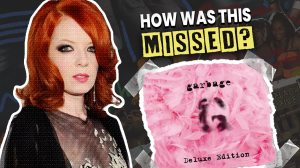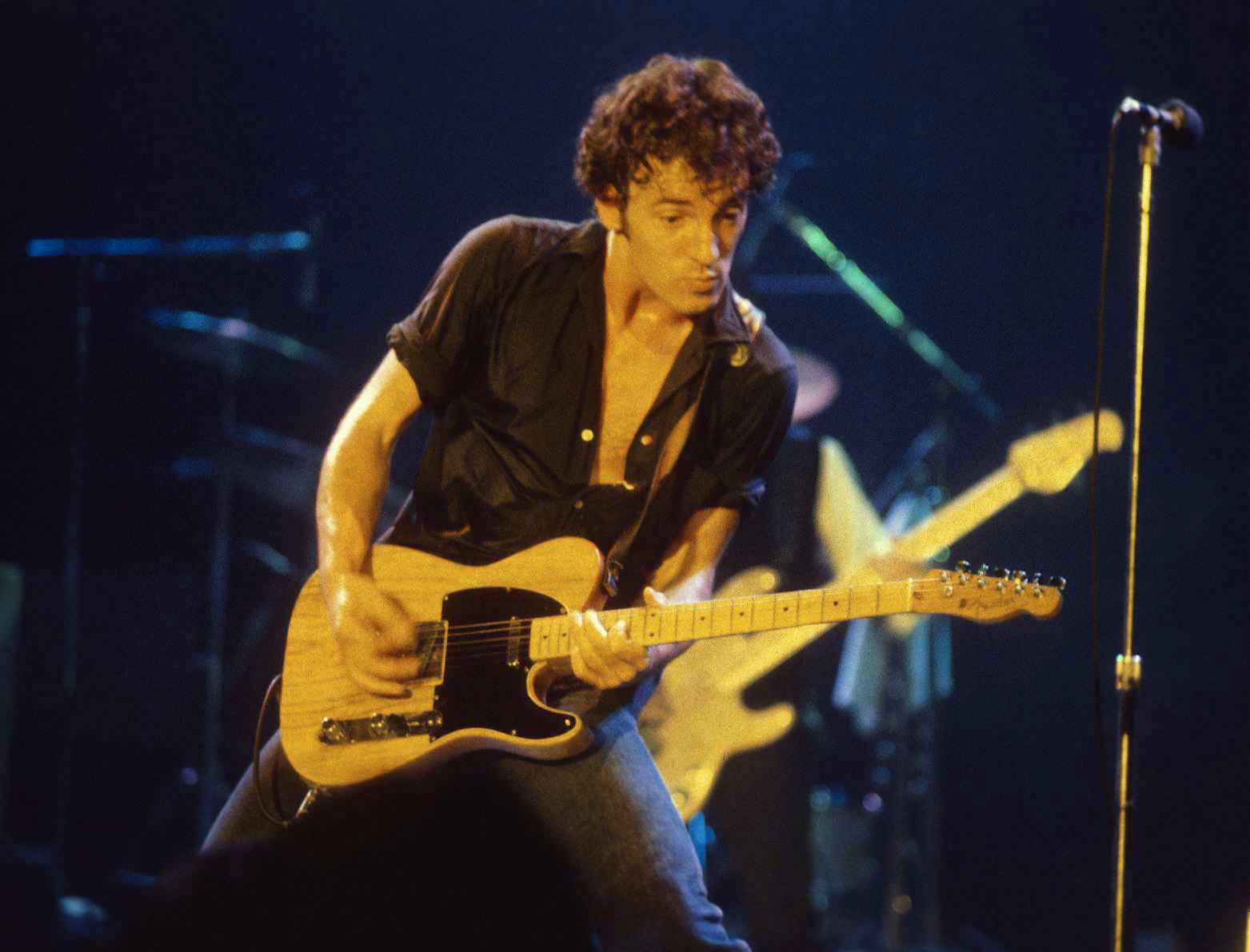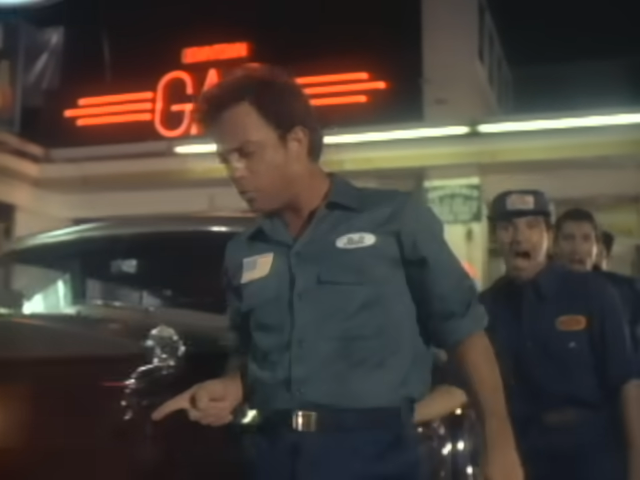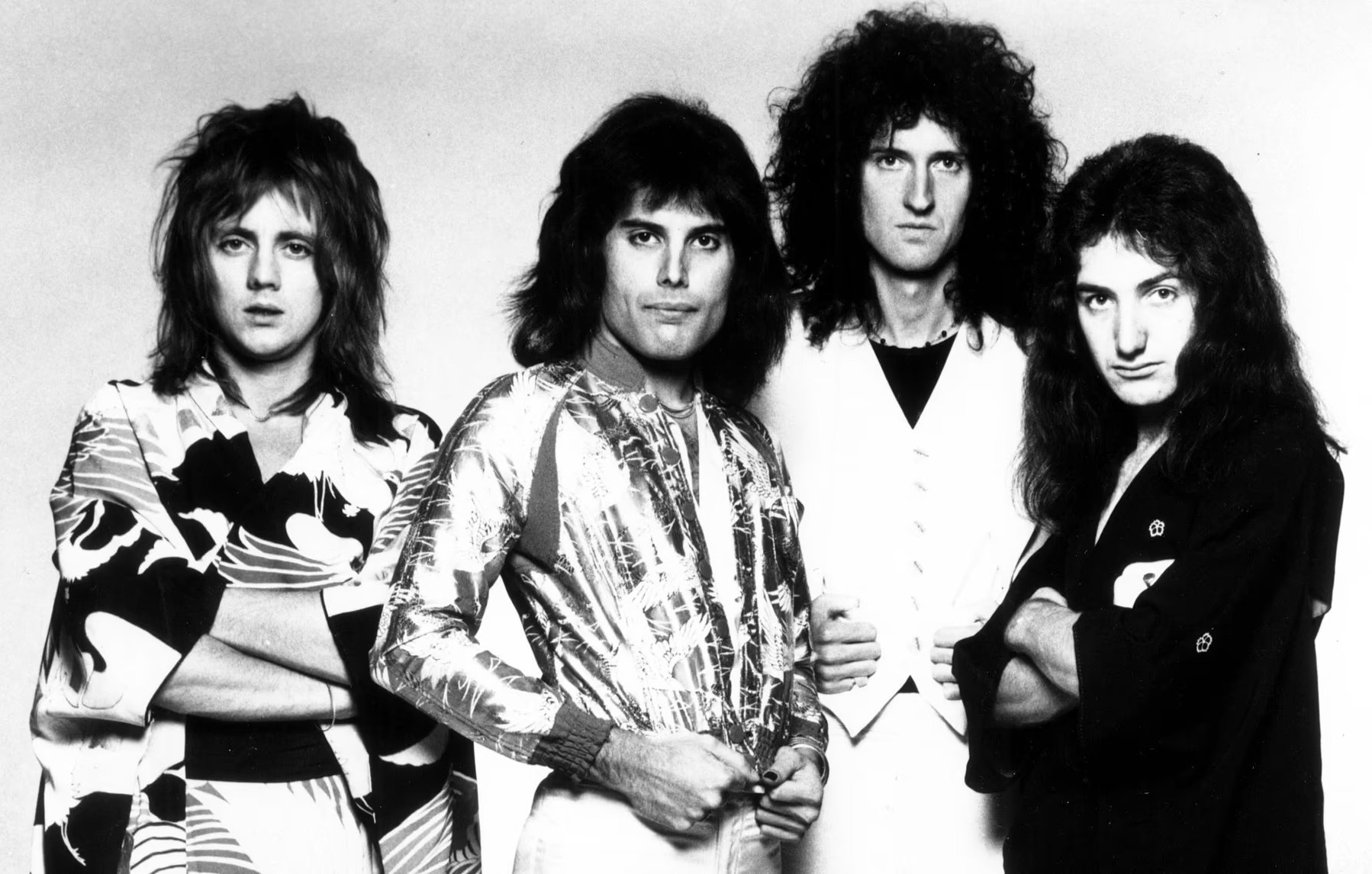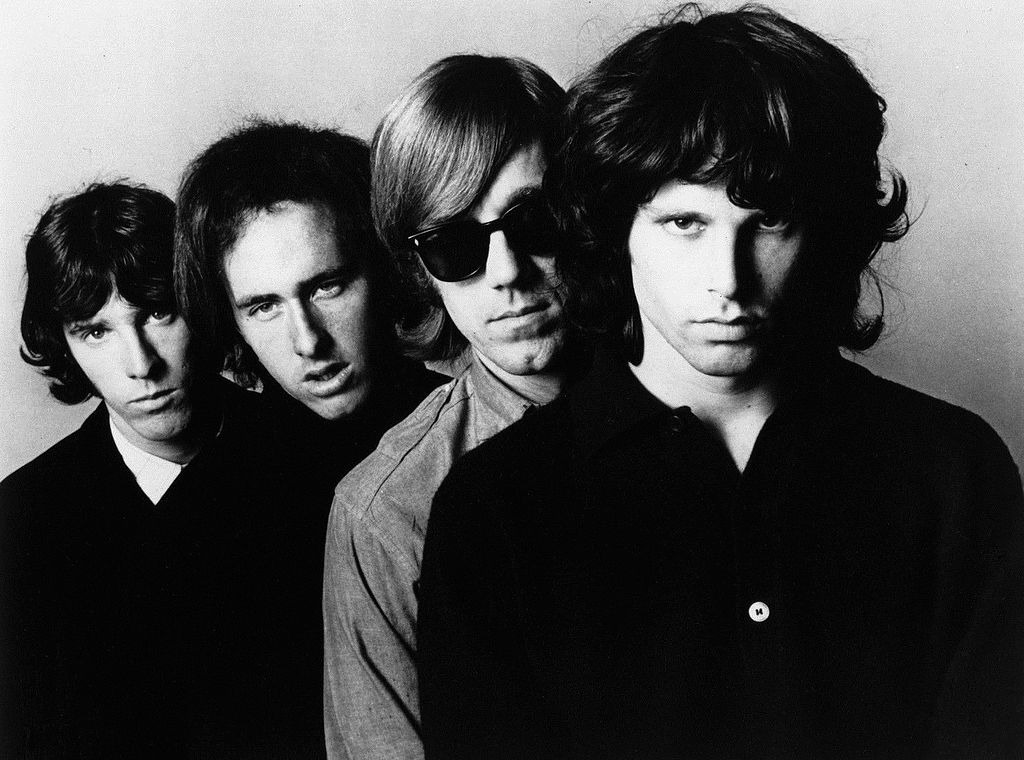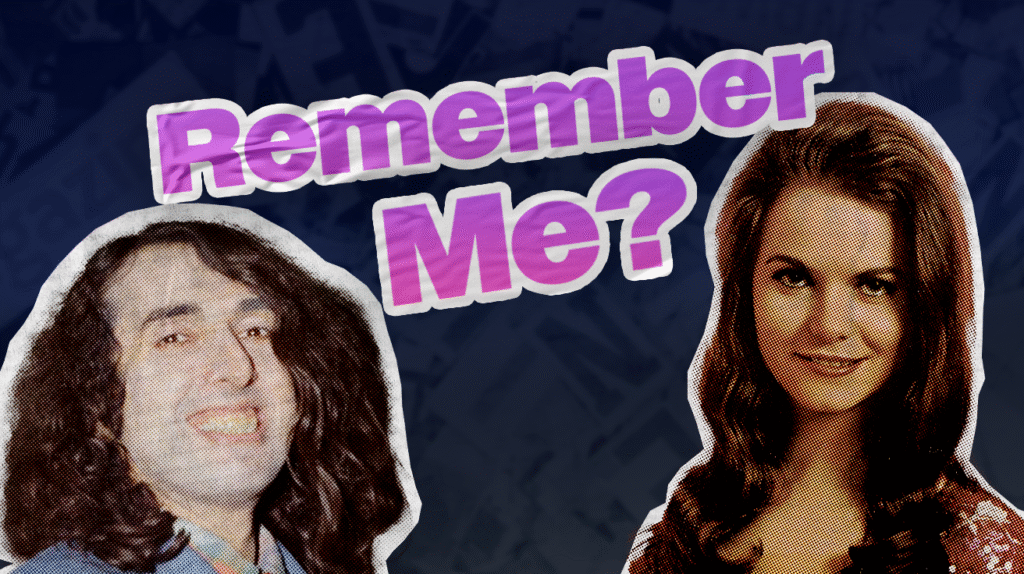
The 1960s music scene had its share of masterpieces. The Beatles and Dylan changed everything. But here’s the weird part – amid all that genius, some truly head-scratching songs somehow nabbed the #1 spot.
These tunes topped charts despite breaking pretty much every rule of what “good music” should sound like. And yet, millions of records sold. Sometimes, success makes absolutely no sense (just ask anyone who remembers “Baby Shark”).
12. Ringo by Lorne Greene (1964)

A TV cowboy with zero musical talent knocked The Beatles off the #1 spot in 1964, proving fame could trump ability in the bizarre world of 1960s charts. Lorne Greene, TV’s Ben Cartwright, somehow topped Billboard with “Ringo,” a spoken-word Western tale delivered with all the musical talent of a GPS navigation system. The entire “song” is basically Greene narrating over dramatic music while occasionally a chorus dramatically bellows “RIIIIINGO!”
What makes this chart success extra baffling is that Greene wasn’t remotely a singer. He just… talked. Dramatically. About a gunslinger. And America went wild for it! (Maybe folks were just confused and thought it was about Beatles drummer Ringo Starr?) This song hitting #1 is like finding out your high school principal’s podcast topped Spotify charts. Sometimes fame in one area creates a bizarre immunity to criticism in another.
11. Dominique by The Singing Nun (1963)
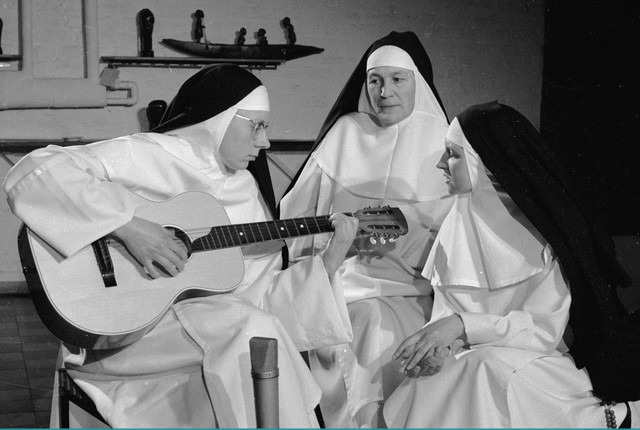
Sung entirely in French about a 13th-century saint, “Dominique” somehow provided American listeners the musical comfort they craved during the grief-stricken aftermath of Kennedy’s assassination. Sister Luc-Gabrielle (aka The Singing Nun) scored a massive #1 hit with this gentle folk tune and her acoustic guitar. It’s as if a kindergarten teacher’s naptime melody somehow wound up on heavy rotation between The Beach Boys and Elvis.
The song’s massive success raises so many questions. Did Americans suddenly develop fluency in French? Was the nation experiencing a collective religious awakening? Neither, probably. The song’s childlike simplicity and novelty factor turned it into the 1963 equivalent of a viral sensation. The Singing Nun’s Grammy win over actual musicians trained for years might be the biggest musical upset since… well, every other song on this list. Sometimes being completely out of place is actually your superpower.
10. Winchester Cathedral by The New Vaudeville Band (1966)

Psychedelic rock was revolutionizing music in 1966, but apparently, what listeners really wanted was a fake 1920s band with megaphone vocals and honky-tonk piano. “Winchester Cathedral” featured a deliberately antiquated music hall style that stuck out on 1966 radio like someone wearing a tuxedo and monocle at a Jimi Hendrix concert.
Here’s the kicker: The New Vaudeville Band wasn’t even a real band! Songwriter Geoff Stephens created them specifically for this novelty track. When it unexpectedly became a hit, he had to scramble to assemble actual humans to tour. Somehow, this throwback oddity beat The Beach Boys’ groundbreaking “Good Vibrations” for a Grammy Award. This travesty of musical justice is like giving an Oscar for Best Visual Effects to someone who drew stick figures on a napkin while Avatar was nominated, and some might agree that it’s one of the few rock songs that rock fans wouldn’t want to remember.
9. Ballad of the Green Berets by Staff Sergeant Barry Sadler (1966)

As college students burned draft cards and protested the Vietnam War, millions of Americans were simultaneously sending a military recruitment anthem to #1 for five straight weeks. Staff Sergeant Barry Sadler’s “Ballad of the Green Berets” celebrated America’s elite fighting forces with all the subtlety of a patriotic bumper sticker. The song stood out in the psychedelic era like a crew cut at Woodstock.
Sadler, recovering from a combat injury, sang with military precision rather than musical talent. Yet the straightforward march-like anthem resonated with mainstream America still supportive of the Vietnam War. The music world was splitting faster than your pants at an all-you-can-eat buffet. While hippies tuned into protest songs, millions of Americans embraced this unabashedly pro-military ballad. Its success highlights how the same country that produced both Woodstock and Richard Nixon somehow coexisted on the same planet.
8. Sugar Shack by Jimmy Gilmer and The Fireballs (1963)
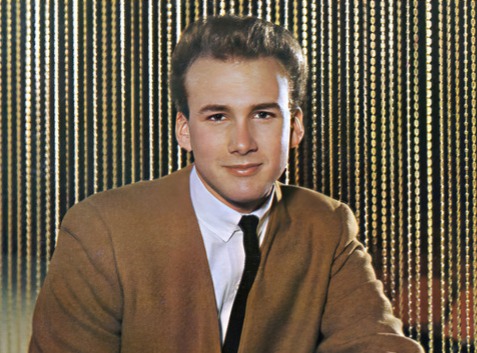
If you’ve ever wondered what passed for a hit before The Beatles changed everything, “Sugar Shack” offers the perfect time capsule of pre-British Invasion banality. This bouncy little number about a guy who visits a coffee house to gawk at a girl topped charts for five weeks in 1963, featuring a distinctive Hammond organ sound that cost exactly $49. The lyrics have all the depth of a kiddie pool, but boy did they sell records!
The song’s main distinguishing feature? A weird, wheezy organ sound that’s like the musical equivalent of that one weird toy sound effect everyone remembers from childhood. Jimmy Gilmer’s vocals don’t exactly push any boundaries. Yet, somehow, this lightweight tune outsold early folk masterpieces, proving that sometimes ear-candy beats nutrition. Musical taste is weir
7. Honey by Bobby Goldsboro (1968)

Need proof that sentimentality trumps substance? While Hendrix redefined guitar virtuosity in 1968, Bobby Goldsboro topped charts for five weeks with a tearjerker about his fictional dead wife. This saccharine ballad about a man’s deceased spouse who once wrecked the car and cried at sad movies makes Nicholas Sparks novels look like gritty documentaries in comparison. The song’s emotional manipulation is about as subtle as a sledgehammer to the tear ducts.
With its swelling strings and Goldsboro’s quivering voice practically begging listeners to weep, “Honey” sits in that unique musical space between genuinely moving and unintentionally hilarious. Yet despite (or because of) its emotional excess, it spent five weeks at #1. The same country embracing psychedelic rock was simultaneously dabbing its eyes to this musical hallmark card. “Honey” proves that sometimes musical taste is like those jeans from high school – it doesn’t always age well, but plenty of people are still emotionally attached.
6. Mr. Custer by Larry Verne (1960)

The most culturally insensitive #1 hit of the decade, “Mr. Custer,” turned a Native American military victory into a comedy novelty complete with war whoops and racist stereotypes. This deeply questionable comedy record features a soldier whining about not wanting to fight at Little Bighorn. With cartoonish “Indian” war whoops and bugle calls, it treats a historical massacre with all the cultural sensitivity of a Halloween costume labeled “Sexy Native American.”
Verne’s exaggerated, whiny voice is like fingernails on the chalkboard of music history. The entire premise – mining humor from Custer’s Last Stand – feels about as appropriate as making jokes at a funeral. Yet audiences ate it up! The song’s success shows how 1960 existed in a different universe of cultural awareness. Listening to “Mr. Custer” today is like finding your grandparents’ high school yearbook with casual racism in the margins – a cringe-worthy reminder that “the good old days” weren’t always so good for everyone.
5. MacArthur Park by Richard Harris (1968)

Seven minutes long with cryptic lyrics about melting cake, Richard Harris’s overwrought epic offered listeners the perfect combination of pretension and absurdity that somehow nearly topped the 1968 charts. This actor (yes, the original Dumbledore for you Harry Potter fans) emotes his way through lyrics about someone leaving cake out in the rain with the dramatic intensity of a Shakespearean monologue.
The song is like the musical equivalent of that weird art film everyone pretends to understand but secretly finds confusing. Its infamous line about never having “that recipe again” has spawned decades of mockery. Yet something about this pretentious musical soufflé connected with listeners. Maybe sometimes we all need a break from three-minute pop songs about love? Or maybe in 1968, with everything else going crazy in America, a song about melting pastry made perfect, absurd sense. Musical taste is weird that way.
4. I’m Henry VIII, I Am by Herman’s Hermits (1965)

Possibly the laziest #1 hit in music history, “I’m Henry VIII, I Am” proudly announces “second verse, same as the first” rather than bothering to write additional lyrics. At the exact moment The Beatles were releasing “Help!” and The Rolling Stones were recording “Satisfaction,” Herman’s Hermits topped the American charts with this recycled British music hall song from 1910. Peter Noone sings with exaggerated cockney pronunciation about being the eighth husband of a widow.
This featherweight novelty somehow dethroned genuine rock innovations on the charts. The entire lyrical content could fit on a Post-it note. It’s like serving a microwaved hot dog at a gourmet food festival and watching it win first prize. Yet Americans couldn’t get enough of this musical trifle! The British Invasion wasn’t just about musical revolution – it also included these musical empty calories that capitalized on America’s sudden obsession with all things British, regardless of quality. Sometimes, the sizzle truly does outsell the steak.
3. Surfin’ Bird by The Trashmen (1963)

When raw, unhinged rock and roll collides with nonsensical lyrics, you get a garage punk anthem that defies all musical logic and reason. The Trashmen’s “Surfin’ Bird” erupted from Minneapolis with a manic energy that would become a quintessential example of mid-60s musical absurdism. The song mashes together two previous R&B tracks by The Rivingtons into a frenzied, almost delirious musical assault that seems designed to short-circuit rational thought. Its breathless, repetitive vocal delivery captures the pure, unfiltered id of teenage rock and roll rebellion.
For all its primitive chaos, “Surfin’ Bird” represents a pivotal moment in rock music’s evolution – a bridge between early rock and roll’s rhythm and blues roots and the more experimental sounds that would define the mid-to-late 1960s. The track’s seemingly nonsensical approach belies a sophisticated deconstruction of musical form, turning repetition and noise into an art form that would later influence punk and new wave musicians. Its enduring popularity – from cult following to pop culture references in movies and television – proves that sometimes musical genius emerges from complete musical anarchy, transforming what initially sounds like pure noise into an unlikely classic.
2. Harper Valley PTA by Jeannie C. Riley (1968)

When a mini-skirted widow marches into the PTA meeting to expose everyone’s hypocrisy, you get the perfect revenge fantasy that satisfied both conservative country fans and progressive pop listeners in divided 1968 America. Jeannie C. Riley stormed the charts with this country-pop tale of comeuppance. “Harper Valley PTA” tells the story of a woman who calls out her daughter’s school board. Riley delivers the sassy lyrics with the energy of someone who’s been rehearsing this takedown in the shower for weeks. Speaking of country songs, here are 25 that every country fan knows.
For all its chart success, the song trades in simplistic moral outrage rather than nuanced storytelling. Its “gotcha” narrative plays like a revenge fantasy where everyone gets exactly what they deserve – something that rarely happens in real life. Still, there’s something undeniably satisfying about its tale of comeuppance. It’s the musical equivalent of those viral videos where someone perfectly shuts down a rude customer. Despite its musical limitations, “Harper Valley PTA” struck a chord across political spectrums – proof that everyone, regardless of politics, enjoys a good hypocrite-busting.
1. Tiptoe Through the Tulips by Tiny Tim (1968)

For listeners seeking the absolute strangest musical experience of the 1960s, Tiny Tim’s falsetto-and-ukulele revival of a 1929 novelty tune delivered an otherworldly performance that defied categorization. While it peaked at #17 rather than #1, no list of musical oddities would be complete without it. Herbert Khaury (aka Tiny Tim) transformed a forgotten ditty through his unique vocal approach. With his long hair, vintage clothes, and utterly unique performance style, he stuck out in the late 60s music scene like a Victorian gentleman at a rave.
His wavering falsetto could crack glass, and his ukulele playing wasn’t winning any technical awards. Yet somehow this musical time traveler captivated audiences on “Rowan & Martin’s Laugh-In” and other TV shows. Tiny Tim proved that sometimes being memorably weird beats being conventionally good. His success is like watching your eccentric uncle who collects vintage spoons suddenly go viral – completely unexpected but somehow fitting for an era that valued authenticity and individuality above all else.






